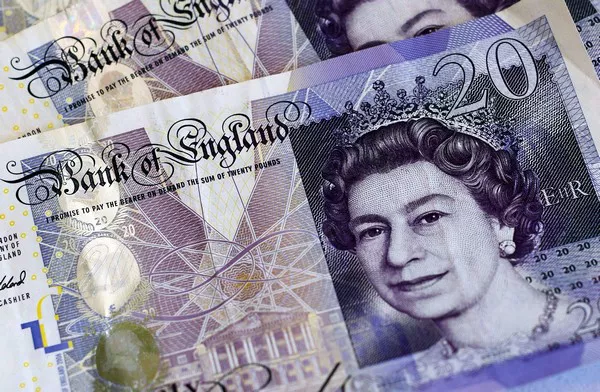The British one-pound coin, a resilient and enduring symbol of the United Kingdom’s currency, has undergone several design changes and innovations over the years. In this article, we delve into the current design of the British one-pound coin, tracing its evolution, examining its intricate features, and shedding light on the security measures that make it a reliable medium of exchange.
Historical Perspective: The Journey of the One-Pound Coin
The history of the British one-pound coin is a testament to the evolution of currency in the United Kingdom. Prior to the introduction of the one-pound coin, the pound was represented by a banknote and the familiar one-pound note.
The need for a coin equivalent to the one-pound note arose due to concerns about the durability of paper currency. To address this, the Royal Mint introduced the first one-pound coin in 1983. Since then, the design and composition of the coin have evolved significantly.
The Current Design: A Multifaceted Portrait
The design of the current British one-pound coin, introduced in 2017, features a blend of historical and modern elements. Let’s delve into its key design components:
Obverse (Front) Design:
Portrait of Queen Elizabeth II: The obverse side of the coin prominently displays a portrait of Queen Elizabeth II, designed by Royal Mint engraver Jody Clark. This is the fifth official portrait of the Queen to be featured on British coinage.
Mint Year: Below the Queen’s portrait, the year of mintage is inscribed.
“ELIZABETH II D G REG F D”: Surrounding the Queen’s portrait are inscriptions that read “ELIZABETH II” (Elizabeth the Second), “D G REG” (Dei Gratia Regina, which means “By the Grace of God, Queen”), and “F D” (Fidei Defensor, which means “Defender of the Faith”). These titles have a historical significance dating back to earlier British monarchs.
Reverse (Back) Design:
The Royal Arms: The reverse side of the coin features the Royal Arms of the United Kingdom, a symbol of the nation’s sovereignty and monarchy. The Royal Arms consists of a shield with the national emblems of England, Scotland, Wales, and Northern Ireland.
Floral Emblems: On either side of the shield, you can find floral emblems representing England (the rose), Scotland (the thistle), Wales (the leek), and Northern Ireland (the shamrock). These symbols are a nod to the United Kingdom’s rich cultural heritage.
“ONE POUND” and “DECUS ET TUTAMEN”: The coin’s denomination, “ONE POUND,” is inscribed at the top. Below the Royal Arms, the Latin phrase “DECUS ET TUTAMEN” is present, which translates to “An Ornament and a Safeguard.” This phrase has historical ties to earlier coinage in the UK.
Composition and Dimensions
The modern British one-pound coin is distinctive not only in design but also in composition and dimensions:
Bi-Metallic Structure: The coin features a bi-metallic composition, with a gold-colored outer ring and a silver-colored center. This bi-metallic structure is not only visually striking but also enhances the coin’s security.
Dimensions: The one-pound coin has a diameter of 23.03 millimeters and a thickness of 2.8 millimeters, making it both compact and durable for everyday use.
Security Features: The Shield of Protection
One of the most notable aspects of the modern one-pound coin is its robust security features, designed to deter counterfeiting. These features include:
12-Sided Shape: The coin is 12-sided, which sets it apart from previous round one-pound coins. This distinctive shape is not only visually striking but also difficult to replicate accurately.
Micro-Lettering: Tiny lettering on the coin’s milled edge reads “ONE POUND” and the year of mintage, providing a subtle yet effective anti-counterfeiting measure.
Hidden High-Security Feature: An undisclosed high-security feature, known only to the Royal Mint and law enforcement, is embedded within the coin. This hidden feature adds an additional layer of security.
Hologram-Like Image: On the reverse side, near the floral emblems, a latent image forms when the coin is tilted. This dynamic, hologram-like effect is challenging for counterfeiters to reproduce accurately.
Ultra-Violet (UV) Ink: When subjected to UV light, the lettering on the coin’s milled edge fluoresces, further confirming its authenticity.
Electro-Magnetic Signature: The coin’s bi-metallic structure creates a unique electro-magnetic signature that can be verified using specialized equipment.
Collectibility and Commemorative Issues
The British one-pound coin has also been the canvas for various commemorative issues and special editions, celebrating significant events and anniversaries. These coins often feature unique designs and limited mintages, making them highly sought after by collectors.
For instance, in 2016, the Royal Mint released a special one-pound coin to mark the 400th anniversary of William Shakespeare’s death, featuring an intricate design inspired by his works. Such commemorative coins serve not only as collectors’ items but also as expressions of cultural and historical significance.
Conclusion
The British one-pound coin, with its distinctive design, composition, and security features, is a tangible reflection of the United Kingdom’s rich history and heritage. As it continues to evolve and adapt to the demands of modern commerce, the one-pound coin remains a symbol of national identity and financial stability. Its enduring legacy underscores its importance in the world of numismatics and everyday transactions, where it serves as both a practical currency and a piece of history.


